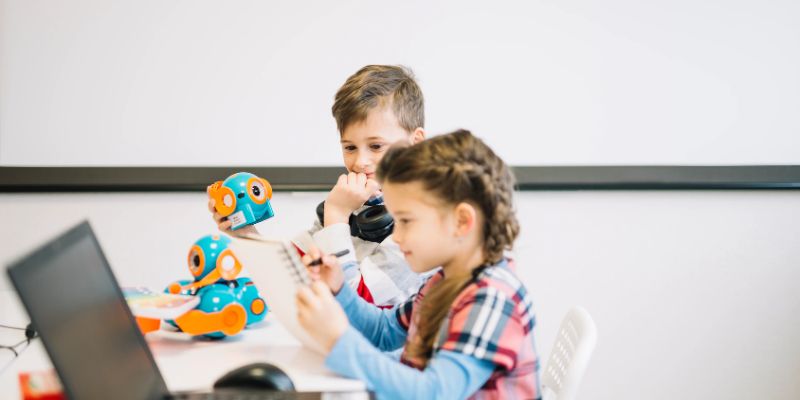
In today’s digital age, technology has become an integral part of our lives, transforming various aspects, including education. Technology has revolutionised how children learn, opening up new possibilities and opportunities for their educational growth. From interactive learning platforms to educational apps and virtual reality experiences, memory improvement techniques are reshaping modern child education’s landscape.
Enhanced Engagement and Interactive Learning Experiences
With the aid of technology, child education has become more engaging and interactive. Educational software, apps, and multimedia resources provide dynamic and interactive learning experiences. Children can actively participate in virtual simulations, educational games, and multimedia presentations, fostering curiosity and promoting active learning.
Personalized Learning and Adaptability
Technology enabled personalised learning experiences tailored to individual needs and learning styles. Educational platforms and software can assess a child’s strengths, weaknesses, and learning preferences, allowing for customised learning paths. Adaptive learning programs adjust the difficulty level and pace of learning, ensuring that children are appropriately challenged and supported. Implementing concentration activities for students can significantly improve children’s learning abilities.
Access to Vast Knowledge and Resources
The internet has opened up a vast world of knowledge and resources for children. Online libraries, digital encyclopaedias, and educational websites provide instant access to information on various subjects. Children can explore diverse topics, conduct research, and deepen their understanding beyond what traditional textbooks can offer.
Enhanced Collaboration and Communication
Technology facilitates collaboration and communication among students, teachers, and parents. Online platforms and tools enable seamless communication, allowing teachers to share updates, assignments, and feedback. Collaborative projects and virtual classrooms enable students to collaborate on shared tasks, fostering teamwork and communication skills.
Digital Creativity and Expression
Technology empowers children to unleash their creativity through digital mediums. Graphic design software, animation tools, and video editing platforms provide avenues for artistic expression. Children can create digital artwork, design multimedia presentations, and produce videos, honing their creative skills and exploring various forms of expression.
Enriched Multisensory Learning
Technology enriches the learning experience by incorporating multimedia elements that engage multiple senses. Virtual reality (VR) experiences, educational videos, and interactive simulations provide immersive learning environments. Children can explore historical sites, dive into the ocean’s depths, or journey into outer space, bringing their learning to life.
Preparation for Future Technological Advancements
Integrating technology in child education prepares students for a technology-driven future. Familiarity with technology equips children with essential digital literacy skills and the ability to adapt to new technological advancements. They develop problem-solving skills, critical thinking abilities, and a mindset of lifelong learning.
Conclusion: Harnessing the Power of Technology for Child Education
Technology has the potential to revolutionise child education, offering enhanced engagement, personalised learning experiences, access to vast knowledge, collaboration opportunities, and creative expression. By embracing technology in a balanced and purposeful manner, we can empower children with the skills and knowledge they need to thrive in a digitally-driven world. As we harness the power of technology, it is crucial to maintain a healthy balance, ensuring that children also engage in real-world experiences, social interactions, and physical activities to support holistic development. With the right guidance and thoughtful integration, VR therapy can be a powerful tool to facilitate modern child education and prepare children for a future full of possibilities.